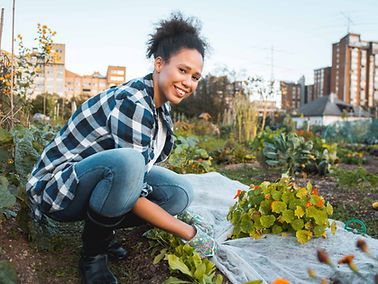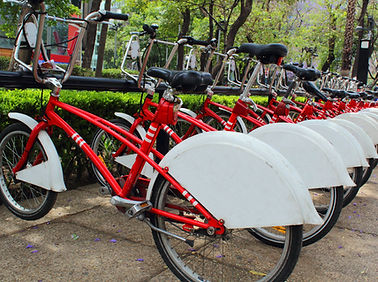The Moonshot Map - Framework & Tags
The PRReSSOLVED Framework
'PRReSSOLVED' is the Project Moonshot team's adaptation of the ReSOLVE framework developed by McKinsey & Company for the Ellen MacArthur Foundation (EMF) to describe the characteristics of circular businesses.
We used this framework to develop a series of tags for each project, initiative or business on the Moonshot Map so that we can better understand not just whether they are circular or regenerative, but how.
We added additional dimensions associated with the Doughnut economic model and what we've learned from analysing regenerative cities. These are: Place-based Innovation, Restorative, Social Innovation and Distributive by Design.

#Place-based Innovation
Place-based innovation can help the development of entrepreneurial ecosystems, which can stimulate sustainable or regenerative economic activity in a region. It can take the form of policies but also practical, community commitments such as eco villages, transition towns, marae innovation etc.
In our view, place-based thinking has become increasingly important with our Covid-rooted communities rediscovering their communities, and celebrating local creativity and diversity after years of increasing homogeneity from globalisation. Place-based innovation, such as creating shorter, local supply chains, is also key to improving our resilience in the face of ongoing uncertainty.
#Regenerative
At Project Moonshot we recognise that regenerative means different things in different industries and contexts. Regenerative agriculture, for example, is probably the best understood, and a lot of work has been done on urban regeneration over the years, while the Capital Institute has developed eight principles of a regenerative economy applied to their work with the Regenerative Communities Network (RCN).
The definition proposed by Piero Morseletto in the Journal of Industrial Ecology is relevant in our context: the ‘promotion of self-renewal capacity of natural systems with the aim of reactivating ecological processes damaged or over-exploited by human action’.
Regenerative for us means demonstrably moving beyond sustainability along a scale to restoring what existed before and ultimately, regenerating natural systems and communities.
Frameworks such as the Future-Fit Business Benchmark (FFBB) which use a science-based, systems approach to help businesses achieve ‘sustainability’ through 23 Break-Even Goals, then help them aim for ‘regenerative’ by working towards 24 Positive Pursuits, are both practical and rigourous. Unlike other frameworks, Future-Fit requires businesses to change their core business models rather than accept incremental change around the edges.

Until more businesses use frameworks such as these, we look for projects that are taking a truly systems approach to transformation. To get the ‘regenerative’ tag, a gold standard, an organisation’s impact needs to be thinking ‘and’ rather than ‘or’. For example: restoring ecosystems + creating thriving communities + using renewable energy and materials + helping customers / communities / suppliers to become regenerative.
Read this blog by one of our Founder Curators who is an expert in regenerative economics.

#Restorative
Restorative means the return to a previous or original state. This includes the use of renewable energy and materials; repairing or restoring products and restoring or conserving ecosystems. For the Moonshot Map, we also consider community work restorative.
A key difference from the EMF ReSOLVE Framework, this tag includes extending life through repair (such as at repair cafes); and design for durability and upgradability.
#Social Innovation
We like this Manifesto and 13 Principles for Transformative Social Innovation which states
"[The} processes of challenging, altering and replacing our dominant ways of doing, thinking and organising, is what we call transformative social innovation."
For the Moonshot Map, we consider social innovation to include initiatives that are intergenerational, whanau-centred, interconnected; seeking to produce new insights, skills, and capabilities to grow the size, diversity and capacity of the social ecosystem.


#Share
The sharing economy is commonly defined as a peer-to-peer (P2P) model of acquiring / providing / sharing goods and services that's often facilitated by a community-based online platform. On the Moonshot Map, we list the location for such online platforms as the head office.
This tag includes the reuse of assets, as-a-service models e.g. where physical assets can be shared as services; and second-hand shops. Note: Unlike the EMF ReSOLVE Framework, repair is captured in the #Restorative tag above.
Please note that gig economy platforms are unlikely to make it onto the Moonshot Map: exploitation of workers through the gig economy is not considered good social practice (!)
#Optimise
The Moonshot team considers this the weakest of all the categories that the management consultancy McKinzie & Company developed for the Ellen MacArthur Foundation.
It includes: increased performance and efficiency of products; removing waste in production (such as by Lean manufacturing) and across the supply chain; and leveraging big data, automation, remote sensing and steering etc.
In our view, this is an extension of BAU and, on its own, doesn’t demonstrate a transition to new economic thinking. However, in combination with other tags, this has the potential to be a powerful accelerator.


#Loop
Loop is currently the most popular tag on the Moonshot Map. It is a catch-all which includes: closing material / waste loops such as through product stewardship; remanufacturing products or components; repurposing; recycling; anaerobic digestion; and extracting biochemicals from organic waste (e.g. for circular bioeconomy).
Many people think that simply closing a waste loop is an example of a circular economy practice, but in our view this is not necessarily the case: it’s often just kicking the can down the road without considering the entire value chain / business model. Note: this is different from closed loop systems which we do consider to be circular.
However, closing loops, such as through product stewardship, is often the first step to a circular economy, which is why we're pleased so many businesses carry this tag.
#Virtualise
This tag is about dematerialisation leading to the avoidance of waste.
This can either be direct e.g. through digitalisation: the conversion of text, pictures, or sound into a digital form, such as CDs to digital; or indirect e.g. online shopping.
Let's not forget that all digital activities carry a carbon footprint of the energy used to cool the servers that store digital information, and in the embodied carbon of the servers and IT equipment we use. According to The Shift Project, digital technologies now emit 4% of greenhouse gas emissions and their energy consumption is increasing by 9% per year.


#Exchange
Exchanging old inputs and technologies for advanced materials e.g. replacing oil-based plastics with bio-based materials as part of the circular bioeconomy or with exponential technologies that will do no harm.
This tag includes the application of new and emerging technologies e.g. 3D printing (although this isn't new), or choosing a new product or service such as an electric plane instead of a fossil fuel plane.
#Distributive
Distributive by design: this tag is about taking a networked, systems approach to open technologies and business models e.g. multiple 3D printers, regional hubs, distributed renewable energy systems etc.
Kate Raworth, our favourite economist and the author of Doughnut Economics, says "To transform today’s divisive economies, we need to create economies that are distributive by design – ones that share value far more equitably amongst all those who help to generate it. And thanks to the emergence of network technologies – particularly in digital communications and renewable energy generation – we have a far greater chance of making this happen than any generation before us.."
According to Open Source Ecology, "Distributive Economics is a paradigm which promotes the equitable distribution of wealth through a combination of open design of products, processes, services, and other economically significant information), flexible fabrication, and open business models, towards replicability. This means that replication is promoted to as many economic players as possible" and "design is improved by local solutions".
